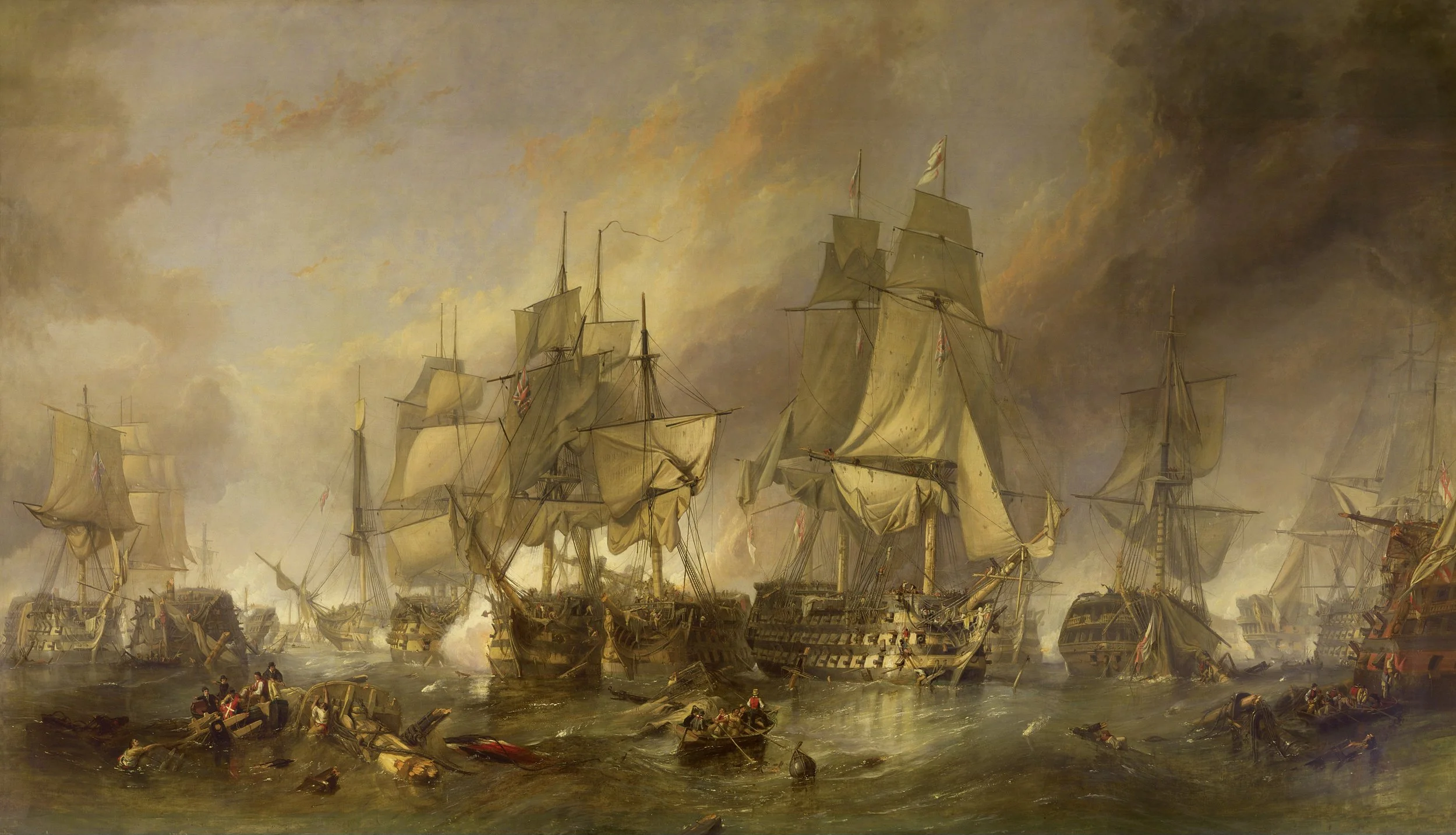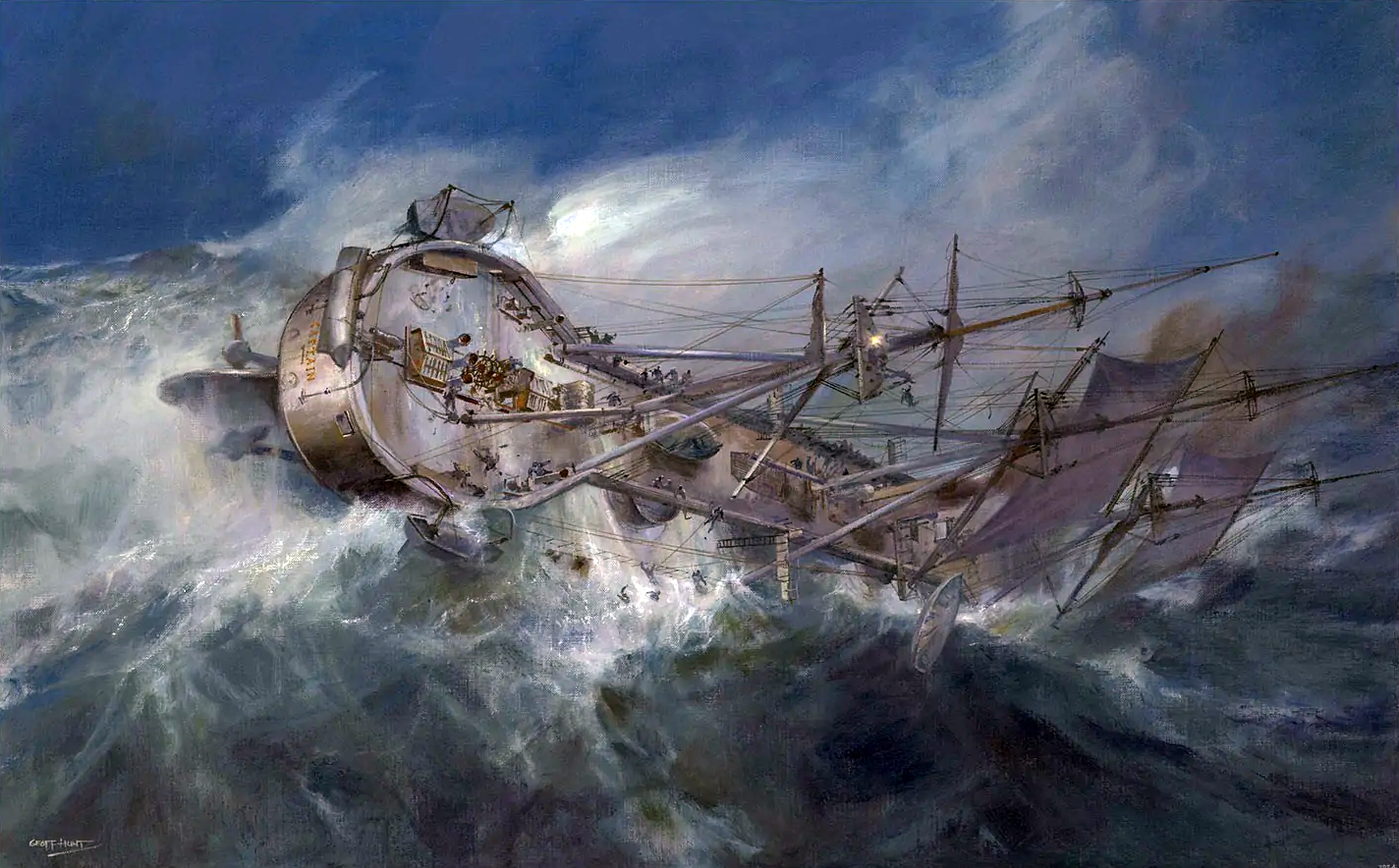AI and the Death of the Old Enterprise: Why Obsolescence Is the New Normal
Pre-Dreadnought Battleship Charlemagne (French Navy), photograph ca. 1900. Launched 1895, commissioned 1899.
“Have I ever talked to you about pre-dreadnought battleships?” I’m given to say - as I did last night at the Vercel Oktoberfest event.
I promised one of the attendees that I would finally try to iron out (excuse the pun) a stump speech I’ve been mangling together for the last two years: what I think is the greatest metaphor for the upheaval we’re living through.
Anyone that studies history in any detail knows that it’s hard to conclusively say anything about anything. Let’s say, however, that for almost a thousand years, from around the year 1000 to the mid-19th century, naval architecture hardly changed. The first cog ships appeared around the 10th century. Clinker hulls gradually gave way to carvel-built hulls between the 14th and 16th centuries. Single-masted ships evolved into three-masted rigs. Caravels gave rise to galleons, and galleons became ships of the line.
The fundamental paradigm held steady: wood, wind, canvas, cannon.
Even at Trafalgar in 1805, HMS Victory was still recognisably the descendant of a 16th-century carrack. Bigger, heavier, and better armed - but not fundamentally different. So around 800 years of continuity. (Brow beating of naval historians not withstanding.)
Clarkson Frederick Stanfield, The Battle of Trafalgar, 21 October 1805, oil on canvas, 1836.
Then advances in metallurgy, steam engines, and artillery brought about a 60-year period of intense innovation and change, where navies around the world had to rediscover what a ship is.
In 1859 the French launched La Gloire, the first ocean-going ironclad. The British answered almost immediately with HMS Warrior in 1860. In 1862 the first battle between ironclads took place in the American Civil War at the Battle of Hampton Roads (March 8–9, 1862), between the USS Monitor and the CSS Virginia. By the 1880s, steel had replaced iron, compound engines had given way to triple-expansion, and battleships mounted heavy breech-loading guns in rotating turrets.
During this transition period, ships were sliding down the slipway already obsolete. HMS Lord Nelson and HMS Agamemnon (laid down 1905, launched 1906) were effectively outdated from a doctrinal perspective the moment they touched the water. It was a time of huge experimentation: turrets shifted positions, beam and draught dramatically changed, sails were alternately kept and discarded, and radical designs like HMS Captain (laid down 1867, launched 1869, sunk 1870) ended in tragedy because new concepts were rushed to sea before they were proven seaworthy.
Geoff Hunt, HMS Captain Going Down off Cape Finisterre (oil on canvas), date unknown. Courtesy of the artist / PPRSMA.
Then in 1906 HMS Dreadnought was launched and the world finally settled on what a ‘battleship’ would largely look like: steam turbine propulsion, ten 12-inch guns, an all-big-gun layout. With Dreadnought’s commissioning, every battleship afloat became obsolete overnight (again).
We can roughly say that this paradigm held until the end of World War II. The sinkings of the Bismarck (1941), HMS Prince of Wales (1941), HMS Repulse (1941), and Yamoto (1945), exposed the vulnerabilities of big-gun ships.
From that point, the dominant capital ship of the seas was no longer the battleship but the aircraft carrier - with HMS Hermes (laid down 1918, launched 1919, commissioned 1924) being the world’s first purpose-built carrier.
It’s interesting to consider: if a naval architect in 1860 had seen a photo of Hermes, they might have wondered why anyone would need a floating strip of tarmac, and where all the guns had gone - especially since the first powered flight would not occur until 1903.
HMS Hermes, Royal Navy, photograph, ca. 1924. The world’s first purpose-built aircraft carrier, commissioned 1924.
So why am I talking about pre-dreadnought battleships, and what does this have to do with AI?
Because this is exactly where we are: in the midst of a period of upheaval and change. The enterprise ship of the line still floats, but not for long. AI is doing to organisations what iron and steam did to navies: collapsing the old paradigm and forcing a new one into being. As a result, new forms of enterprise will emerge that we cannot yet imagine.
Looking at a more recent example, in 1969 the US Department of Defence’s ARPANET went live. This morning, I used what is technically ‘the same’ internet (the brow-beating of internet historians notwithstanding) to watch an influencer give a Labubu doll a haircut on Instagram.
AI started with narrow applications - like early chatbots handling basic customer queries - and now powers autonomous supply chains, and generative tools that create marketing content faster than any human team can. AI-driven CRMs like Salesforce Einstein transform sales by prioritizing leads and automating follow-ups.
The enterprises of tomorrow might be decentralized networks orchestrated by AI, with minimal human oversight, or even fully autonomous business units that adapt in real-time to market shifts - much like an aircraft carrier redefined naval power with its ability to project force far beyond the reach of big guns.
Just like with HMS Dreadnought, once new models arrive, everything that came before them feels instantly, irreversibly out of date. Obsolescence is no longer the exception - it is the rule.
The only certainty is change.




